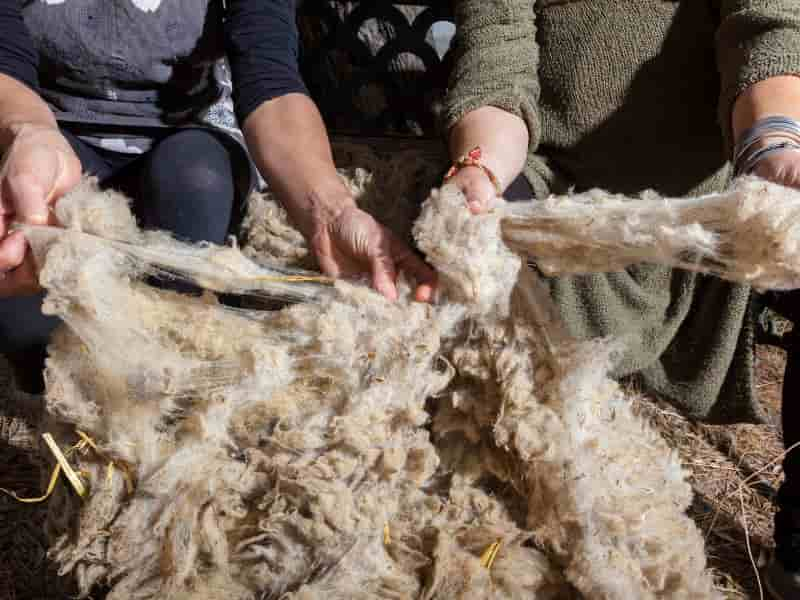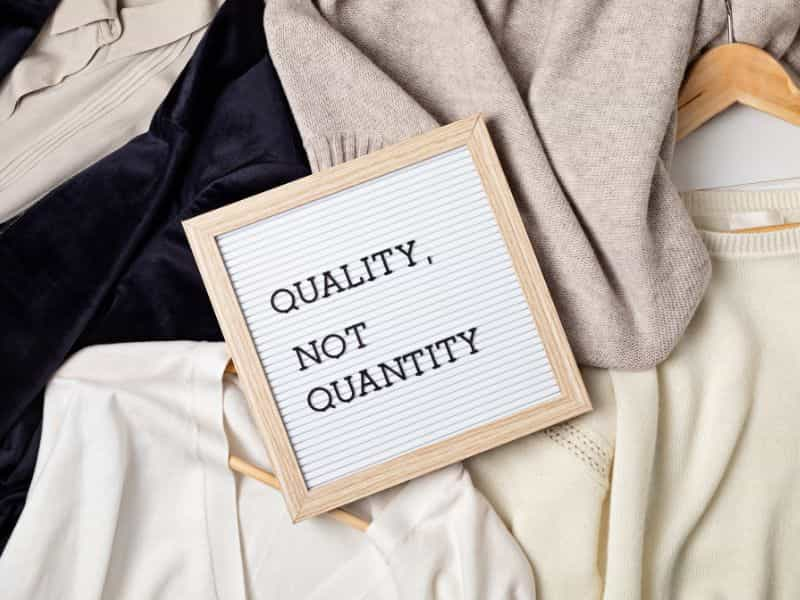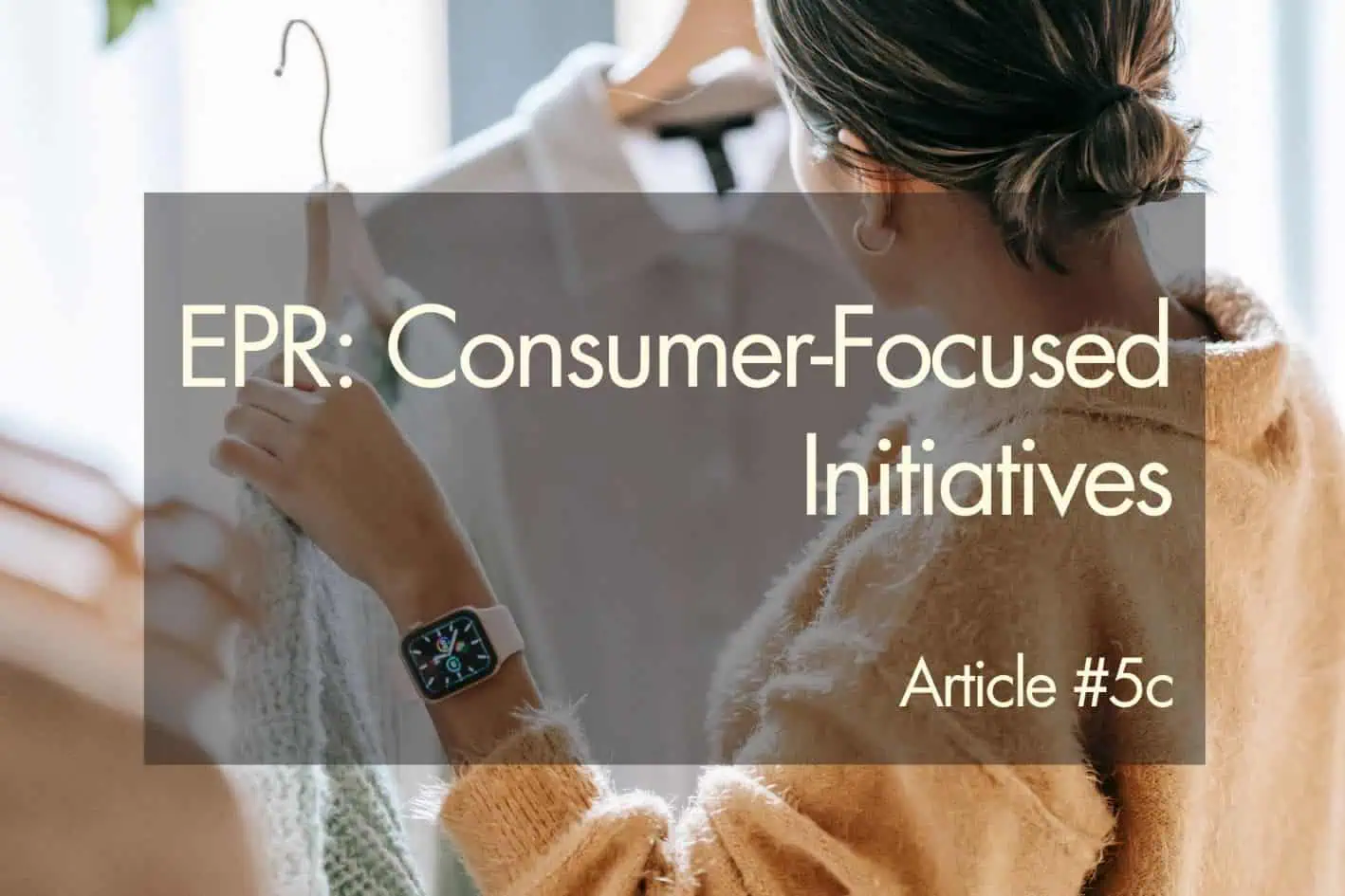WE love Guest posts!
This is a guest post by Mariel Solis Cartes, a talented designer with a love for sustainable fashion production! She has extensive experience working within the Canadian fashion industry and co-founding her own brand! Check out her insights and reflections on the film Fashion Reimagined.
Fashion Reimagined
Introduction
Fashion plays an important part in our lives. It serves not only as a response to the need to dress oneself, but also as a means of conveying expression, fostering creativity, and promoting inclusivity. Over the past few years, I’ve noticed fashion brands are becoming more socially and environmentally conscious, aligning themselves closely with the ideals of their consumers. They are moving away from simply offering trendy fashion and are evolving into entities that prioritize these values. Reimagining the supply chain is key for this. Working towards more sustainable production, being transparent, and working together with consumers to extend product life, are not only needed but should be part of every company’s pillars.
With information being much more accessible than before, it’s obvious that the fashion industry is far from perfect and dreamy. Fashion involves intricate global supply chains, complex processes, and a vast global workforce. It can be challenging to envision and grasp the impact that a single garment can have on both the people connected directly and indirectly to the production chain and the planet. The more brands share with their customers the more it will help them understand the efforts to build a sustainable company and create genuine loyalty.
Sustainability
In recent years, the term ‘sustainable’ has gained significant prominence, capturing the media’s attention and rapidly evolving into a major trend. Back in 2014, when the concept was still relatively new, it garnered over 1.2 million monthly searches on Google. Over time, it has transformed into a powerful and appealing notion, capturing significant attention in the media and quickly evolving into a major trend. Naturally, many companies sought to align themselves with this ‘sustainable’ movement, though some misappropriated the concept, engaging in what is now known as greenwashing. In essence, this refers to companies using the term as a label for public relations and marketing, without genuinely incorporating sustainable practices into their production processes or their relationships with their workforce. This raises the question: What truly characterizes a sustainable brand?
TRANSPARENCY AND TRACEABILITY
While it’s not always necessary to have exhaustive knowledge of what happens behind the scenes, companies can enhance their customers’ shopping experience by providing additional information. This not only empowers customers to make more informed choices but also fosters a culture of savvy shopping. Some companies take a proactive approach in this regard, willingly sharing details about their supply chain. Their aim is to cultivate deeper and more enduring relationships with their customers. Whether through annual reports or by offering insights into a product’s materials and country of origin, these steps contribute significantly to educating the audience about sustainable efforts. Such transparency and traceability are vital aspects of sustainability, acknowledging that achieving 100% sustainability is a challenging goal. Every small contribution, no matter how seemingly insignificant, can have a substantial impact.
In the fashion industry, I can see more brands making a concerted effort. More and more brands are adopting a continuous-improvement mindset, dedicating their efforts to more responsible and efficient production processes, minimizing waste, and ensuring fair treatment for everyone involved in the supply chain. I can certainly see that we are moving towards an industry that is working on making a positive change.
FROM FIELD TO FINISH GARMENT
However, the concept of what constitutes a sustainable company may still appear quite broad, making it challenging to grasp the significant undertaking required to transition toward a more sustainable business model. Canadian filmmaker Becky Hunter made it much more tangible for us, in her captivating and enlightening movie “Fashion Reimagined”. The film chronicles the three-year journey of Amy Powney, Creative Director of the UK fashion brand Mother of Pearl, as she embarks on the creation of her sustainable collection, spanning from the initial stages in the “field to finished garment”.
Amy, who was recognized as the Best Young Designer of the Year by Vogue, chooses to utilize her prize for a collection that is meticulously designed, incorporating sustainable objectives throughout the entire production process, while tracking the environmental impact at each stage. This is not only a business accomplishment but also a personal goal tied to her family roots. Throughout the captivating scenes, Amy gives us insights into the myriad of decisions that she and her team must navigate when aligning the company with sustainable values.

REIMAGINING THE SUPPLY CHAIN
The journey commences when the designer makes the deliberate choice to reevaluate each facet of the supply chain with a strong emphasis on traceability. Her preference is to craft the collection predominantly from natural fibers, specifically wool, and cotton, while avoiding the use of synthetic fabrics due to their limited traceability at the early stages of the supply chain. After conducting thorough research and engaging in discussions with potential production partners, she connects with several suppliers to convey her vision. This is a key step for companies and must be taken seriously, as numerous potential barriers and limitations will typically start to appear, as flexibility and adaptation are put to the test. The list of prospective partners narrows down considerably and she only proceeds with suppliers who either hold certifications or can substantiate the origin of every component involved in the production of the natural fibers.
Her journey takes her to South America in pursuit of a responsible wool provider capable of spinning the fiber, though she encounters challenges due to the fragmented nature of the wool industry across various production stages. I could sense this is where she appeared to have faced critical decisions in upholding her commitment to transparency and traceability. Sourcing natural fibers is typically influenced by factors such as access to technology and the distribution of natural resources. While this can complicate the principle of “fewer suppliers for better traceability” and minimizing environmental impact when transporting materials, it is not an insurmountable challenge.

Similarly, she also digs deep into the different certifications available in the organic cotton industry for the denim pieces she wants to include in her collection, understanding that these provide standards, transparency, accountability, and fairness. Amy knows that working with fibers certified by GOTS – Global Organic Textile Standard – is her best course of action. Communicating the use of materials certified by third parties adds value to the garments and serves as an educational tool for consumers. Therefore, prioritizing this aspect during the sourcing of materials is essential.
REIMAGINING THE SUPPLY CHAIN
The journey commences when the designer makes the deliberate choice to reevaluate each facet of the supply chain with a strong emphasis on traceability. Her preference is to craft the collection predominantly from natural fibers, specifically wool, and cotton, while avoiding the use of synthetic fabrics due to their limited traceability at the early stages of the supply chain. After conducting thorough research and engaging in discussions with potential production partners, she connects with several suppliers to convey her vision. This is a key step for companies and must be taken seriously, as numerous potential barriers and limitations will typically start to appear, as flexibility and adaptation are put to the test. The list of prospective partners narrows down considerably and she only proceeds with suppliers who either hold certifications or can substantiate the origin of every component involved in the production of the natural fibers.
Her journey takes her to South America in pursuit of a responsible wool provider capable of spinning the fiber, though she encounters challenges due to the fragmented nature of the wool industry across various production stages. I could sense this is where she appeared to have faced critical decisions in upholding her commitment to transparency and traceability. Sourcing natural fibers is typically influenced by factors such as access to technology and the distribution of natural resources. While this can complicate the principle of “fewer suppliers for better traceability” and minimizing environmental impact when transporting materials, it is not an insurmountable challenge.
Similarly, she also digs deep into the different certifications available in the organic cotton industry for the denim pieces she wants to include in her collection, understanding that these provide standards, transparency, accountability, and fairness. Amy knows that working with fibers certified by GOTS – Global Organic Textile Standard – is her best course of action. Communicating the use of materials certified by third parties adds value to the garments and serves as an educational tool for consumers. Therefore, prioritizing this aspect during the sourcing of materials is essential.
THE STRUGGLES IN THE RETAIL WORLD
The joy of seeing the completed collection extends beyond the screen, but it is far from the end of the process. Amy faces new challenges when encountering larger firms’ buyers including higher prices, volume limitations, longer production timelines, and the absence of short-term trends in the design of the garments. These are clear entry barriers for sustainable brands when trying to have a presence in department stores, causing inequitable access to this industry.
To overcome these obstacles, various strategies can be employed. These include highlighting the advantages of selecting particular fabrics, emphasizing the involvement of third-party certifications and standards, underlining the functionality and unique style of each collection, and conveying the brand’s core values to the consumers. It’s worth noting that this approach not only benefits the brand but also assists buyers in effectively conveying this information to end consumers, ultimately facilitating sales.
A COLLECTION WITH A VOICE
Finally, Amy and her team unveiled the collection to the world. This is where I had the opportunity to witness the introduction of Mother of Pearl’s inaugural sustainable collection in a remarkably creative manner. It was delivered with a strong statement prompting attendees to reflect on their relationship with the fashion industry and create consciousness about how their choices impact both people and the planet. The presentation of the final garments was not confined to a typical fashion show; it was also accompanied by a meaningful pledge to encourage customers to make the right choice when shopping, driven by more ethical consumerism while valuing the true cost of a piece of clothing.
The powerful message conveyed by the brand deeply resonated with me. I sensed a genuine commitment to crafting fashion with a purpose. As my understanding of sustainability grows, I find myself grappling with a growing conflict between my love for fashion and my awareness of the industry’s potentially harmful impact on the planet Earth, and people. The documentary illustrates how companies can exert control over many aspects of the production process, but it also underscores the post-sale efforts that largely depend on consumers. It is when I witness fashion brands sharing responsibility for the entire lifecycle of a garment that I truly connect with their ethos. I discern a sense of community with shared values centered on enjoying fashion while prioritizing sustainability at every step, and Mother of Pearl exemplifies this.
The brand makes a compelling case for the principles of reuse, repurposing, and repair, making information available on its website about circularity, garment care, and alterations (though this service is currently limited to the UK). I appreciate the brand’s efforts in promoting prolonged affection for our clothing and discouraging short-term use.
While the documentary does not delve into the human aspect of the production process, I believe this is a crucial part of the puzzle that was left unexplored in the film. Some companies may shy away from discussing it openly, fearing potential criticism, but I wholeheartedly encourage other brands to be transparent about the social aspects of their production process whenever the opportunity arises.
Nonetheless, Mother of Pearl provides online information about its social responsibilities and third-party audits, along with their Ethical Code of Conduct which offers consumers valuable insights into the company’s alignment with international standards. Sharing this information is vital to empower consumers with knowledge about the company’s ethical commitments and transparency.

THE COMMITMENT
Mother of Pearl keeps making efforts towards a more circular business model. The brand is committed to keep evolving as a fashion brand that uses resources responsibly. The brand’s dedication includes repurposing deadstock materials in limited edition collections, actively promoting the extension of clothing life cycles through resale and repair services for customers, leveraging technology to curtail the excessive use of natural resources, and advocating for the welfare of animals. Each step taken to close the loop is celebrated, and the brand remains open to new ideas in this regard. While it still feels as though there’s still much work to be done, the collective shift toward a more sustainable industry is where genuine change is born.

Mariel Solis Cartes
Located in the vibrant city of Toronto, Canada, Mariel brings a blend of creativity and conscience to the world of fashion. With a post-graduate degree in Sustainable Fashion Production, she aims to contribute to the future of the industry, harmonizing style and substance, with a focus on more environmentally conscious practices. Hailing from South America, she has infused her cultural heritage into her journey, recognizing the power of fashion with purpose and meaning.




